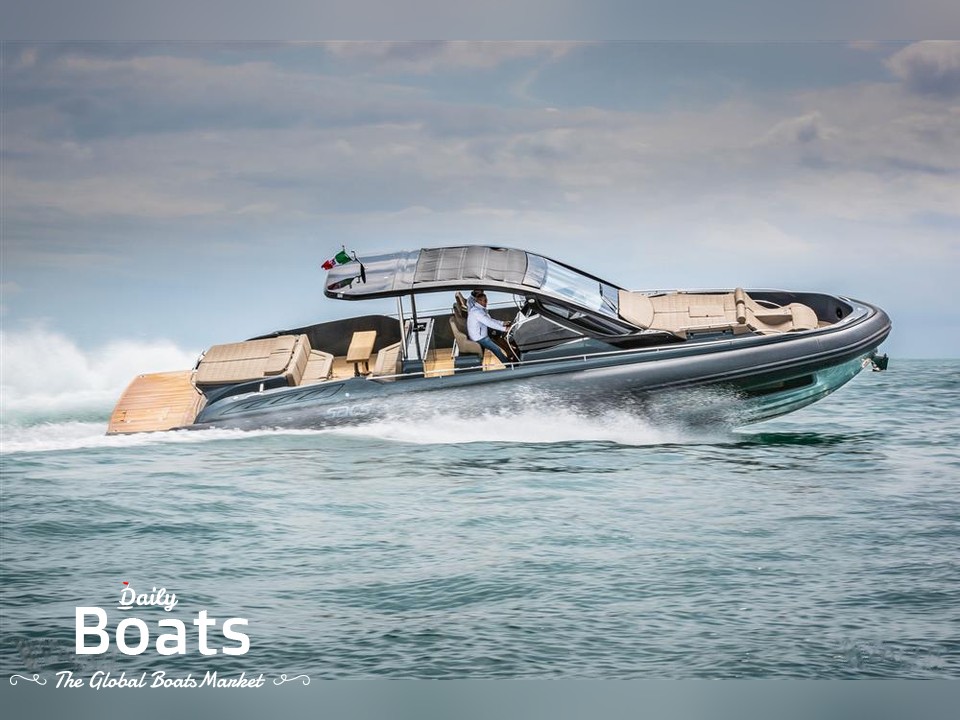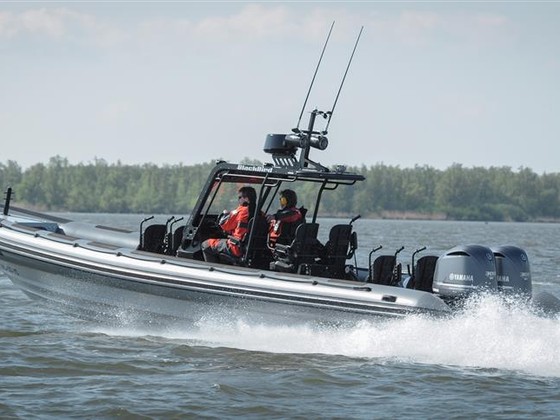Rigid inflatable boats (rib) with cabin

What are rigid inflatable boats (RIB) with cabin?
Introduction
A rigid inflatable boat, or RIB, is a type of boat that combines the features of a hard-hulled boat with the flexibility and lightness of an inflatable. RIBs are popular for both recreational and commercial use, and can be found in a variety of sizes and designs.
One of the advantages of a RIB is that it can be used in a variety of different ways. For example, RIBs are often used as lifeboats on larger vessels because they are stable and can hold a large number of people. Additionally, RIBs are popular for recreational activities like fishing or waterskiing because they are easy to maneuver and provide a smooth ride.
There are two main types of RIBs: those with rigid hulls and those with inflatable hulls. Rigid hulled RIBs are made from materials like fiberglass or aluminum and have a solid, non-inflatable bottom. Inflatable hulled RIBs have an inflatable tube that forms the sides and bottom of the boat. Inflatable hulled RIBs are usually lighter and more portable than rigid hulled RIBs, but they may not be as durable.
Another advantage of RIBs is that they can be fitted with cabins. Cabins provide protection from the elements for both the passengers and crew. They also offer additional storage space for gear or supplies, and can increase comfort levels by providing shelter
What are rigid inflatable boats (RIB)
Advantages of RIBs
Rigid inflatable boats, or RIBs, are a type of boat that combines the features of both inflatable and rigid boats. RIBs are usually made with an inner hull that is inflated with air, and then surrounded by a rigid outer hull. This combination makes for a sturdy and stable boat that is also lighter and more maneuverable than a traditional rigid boat.
There are several advantages to owning a RIB, which include:
- Lighter weight: RIBs are much lighter than traditional rigid boats, making them easier to transport and launch.
- Greater stability: The inflatable inner hull provides greater stability than a traditional rigid boat, meaning you're less likely to tip over in rough waters.
- Increased speed and agility: The lightweight and maneuverable nature of RIBs means they can reach higher speeds and be more agile than traditional boats.
- Reduced draft: Because the inflatable hull sits higher in the water than a traditional hull, RIBs have a reduced draft, making them ideal for shallow waters.
Types of RIBs
There are two main types of RIBs: sport boats and utility boats. Sport boats are designed for speed and agility, and are often used for racing or other high-performance activities. Utility boats are designed for more general use, and often have features like storage compartments or seating for passengers.

What are the benefits of having a cabin on a RIB
Protection from the elements
One of the main benefits of having a cabin on a RIB is protection from the elements. Cabin RIBS are typically equipped with weather-resistant materials and features that can help protect you from the sun, wind, and rain. This can be especially beneficial if you plan on spending extended periods of time out on the water.
Storage space
Another benefit of having a cabin on a RIB is increased storage space. Cabins provide a convenient place to store gear, supplies, and other belongings while out on the water. This can be helpful if you need to keep your belongings dry or safe from the elements.
Increased comfort
A cabin can also provide increased comfort while out on the water. Cabins typically have more room than an open-deck RIB, which can make it more comfortable to move around and relax in while underway. cabins also tend to be better ventilated than open-deck RIBS, which can provide relief from hot weather conditions.
Are there any disadvantages to having a cabin on a RIB
Reduced speed and agility
The main disadvantage of having a cabin on a RIB is that it can reduce the speed and agility of the boat. This is because the cabin adds weight and bulk to the boat, which makes it more difficult to manoeuvre. Additionally, the cabin can act as a wind break, which can make the boat less stable in high winds.
Increased cost
Another downside of having a cabin on a RIB is that it can be more expensive than a traditional RIB. This is because cabins are typically made from higher-quality materials and require more labour to construct. Additionally, cabins can also add features such as windows, which can further increase the cost of the boat.
Conclusion
A RIB, or rigid inflatable boat, is a type of boat that combines the features of both a hard-hulled boat and an inflatable raft. RIBs are popular for their versatility, durability, and relatively low cost. While they are not suitable for every situation, RIBs with cabins can be a great option for those who want the protection and storage space of a cabin combined with the speed and agility of a RIB.







